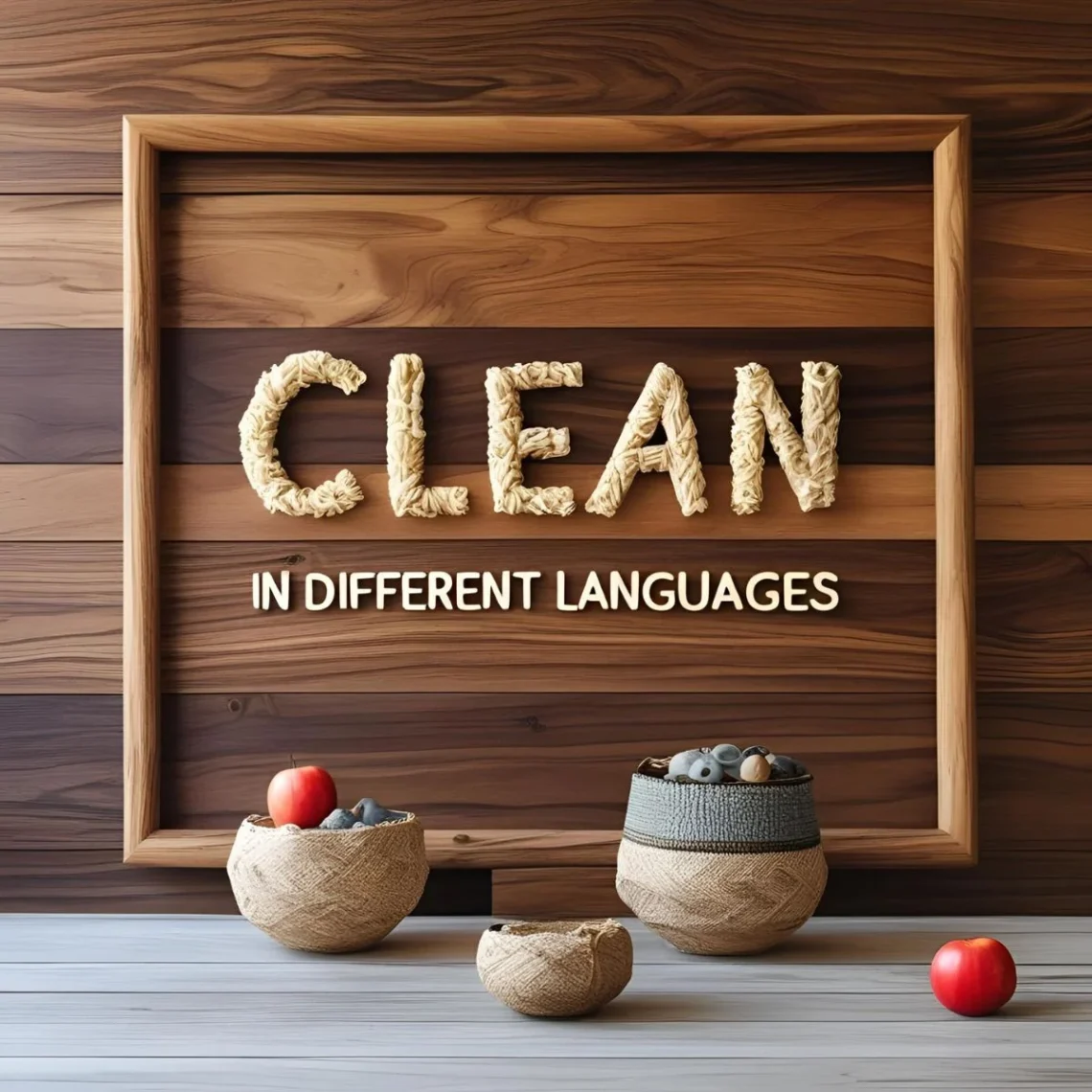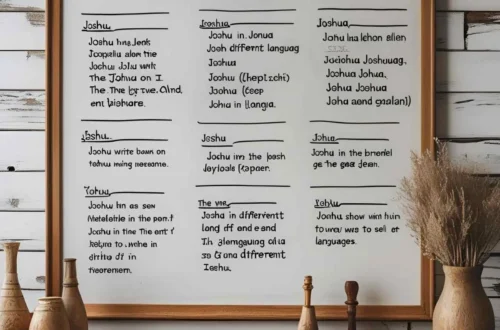I’ll never forget the satisfaction of scrubbing my grandmother’s kitchen until it sparkled, the scent of lemon filling the air. She smiled and said, “It’s clean—now it’s home.” That word, “clean,” carries a universal sense of renewal and care, yet its expression varies across cultures.
Whether it’s a Japanese minimalist’s pursuit of simplicity or a Moroccan family preparing a home for a festival, “clean” reflects shared values of purity and order, shaped by unique traditions.
Let’s explore how this concept is expressed worldwide and what it reveals about cultural priorities.
Reference Table: “Clean” in Different Languages
| Language | Word/Phrase | Cultural/Linguistic Insight |
|---|---|---|
| French | Propre | Suggests both cleanliness and propriety, tied to social norms. |
| Spanish | Limpio | Evokes a sense of purity, often used for both physical and moral cleanliness. |
| Italian | Pulito | Reflects Italy’s love for aesthetic order and beauty. |
| German | Sauber | Emphasizes thoroughness, aligning with Germany’s value of precision. |
| Mandarin | Gānjìng (干净) | Implies a state of purity, often tied to spiritual balance. |
| Hindi | Swachh | Linked to campaigns for public cleanliness, like Swachh Bharat. |
| Japanese | Kirei (きれい) | Also means “beautiful,” blending cleanliness with aesthetics. |
| Korean | Kkaekkeuthan (깨끗한) | Suggests spotlessness, reflecting Korea’s focus on harmony. |
| Arabic | Nadhif (نظيف) | Tied to ritual purity in Islamic traditions. |
| Swahili | Safi | Used for both cleanliness and moral goodness across East Africa. |
| Zulu | Hlanzekile | Emphasizes a state of being purified, often communal. |
| Yoruba | Mọ | Reflects a holistic sense of cleanliness, physical and spiritual. |
| Maori | Ma | Means “pure” or “clear,” often tied to natural purity. |
| Hawaiian | Maʻemaʻe | Evokes the purity of nature, like a clear stream. |
| Cherokee | Gvwalodi | Suggests a state of being cleansed, tied to cultural rituals. |
European Languages: Order and Elegance
In Europe, the word for “clean” reflects cultural values of order and aesthetics. For instance, in French, “propre” implies both physical cleanliness and social propriety, as a tidy home in Paris signals respectability. Meanwhile, Spanish uses “limpio,” which extends to moral purity, often heard in phrases like “corazón limpio” (clean heart) across Spain and Latin America. Additionally, Italian’s “pulito” ties cleanliness to beauty, as Italians might describe a spotless Florence café as “pulito” to praise its charm. In contrast, German’s “sauber” emphasizes thoroughness, reflecting Germany’s cultural focus on precision—think of a meticulously cleaned Munich apartment. Thus, these terms blend practicality with cultural ideals, from French elegance to German efficiency.
Asian Languages: Harmony and Purity
Asia’s diverse languages offer unique perspectives on “clean.” For example, in Mandarin, “gānjìng” suggests purity and balance, often used to describe a serene, clutter-free space in China. In Hindi, “swachh” carries social weight, especially through India’s Swachh Bharat campaign for public cleanliness. Similarly, Japanese uses “kirei,” which doubles as “beautiful,” reflecting the cultural link between cleanliness and aesthetics, as seen in minimalist Tokyo homes. Meanwhile, Korean’s “kkaekkeuthan” emphasizes spotlessness, aligning with Korea’s value of harmonious environments. In Arabic, spoken across over 20 countries like Egypt and the UAE, “nadhif” is tied to ritual purity, essential for Islamic practices like prayer. Consequently, these terms reveal Asia’s blend of practical and spiritual approaches to cleanliness.
African Languages: Community and Purity
In African cultures, “clean” often carries communal and spiritual significance. For instance, Swahili’s “safi,” used in over 20 countries like Kenya and Uganda, means both clean and morally good, as in a “safi” home prepared for a celebration. In Zulu, “hlanzekile” suggests a purified state, often tied to South African rituals where cleansing is communal. Similarly, Yoruba’s “mọ,” common in Nigeria, encompasses physical and spiritual cleanliness, as in preparing a space for a ceremony. These terms, spoken with pride, reflect Africa’s emphasis on shared spaces and collective well-being, often celebrated in vibrant community settings.
Indigenous & Island Languages: Nature and Ritual
Indigenous and island languages tie “clean” to nature and tradition. For example, Maori in New Zealand uses “ma,” meaning “pure” or “clear,” often linked to natural elements like water in rituals. In Hawaiian, “maʻemaʻe” evokes the purity of a clear stream, reflecting Hawaii’s reverence for nature. Similarly, Cherokee’s “gvwalodi” suggests a cleansed state, used in Native American rituals to restore balance. In Samoan, phrases like “mamā” imply cleanliness tied to communal preparation, as in a tidy village for a festival. Across these cultures, from New Zealand to the Cherokee Nation, “clean” emphasizes harmony with nature and community, often marked by rituals.
Cultural Insights: The Evolution of Cleanliness
The concept of “clean” has deep historical roots. In ancient Rome, “mundus” (clean) was tied to both hygiene and cosmic order. In Islamic traditions, “nadhif” reflects centuries-old practices of ritual purification before prayer. Moreover, in African cultures, terms like “safi” are linked to communal cleansing rituals, while in Japan, “kirei” aligns with Shinto beliefs in purity. In modern times, India’s “swachh” has gained prominence through public cleanliness campaigns. These words carry cultural histories, from European hygiene standards to Pacific island rituals, showing how cleanliness reflects both practical and spiritual values across civilizations.
Proverbs and Sayings: Wisdom of Cleanliness
- French: “A clean home is a happy home.” This ties tidiness to emotional well-being.
- Hindi: “Cleanliness is next to godliness.” It reflects spiritual purity in India.
- Swahili: “Clean hands bring clear thoughts.” This links hygiene to mental clarity.
- Japanese: “A pure heart makes a clean space.” It connects inner and outer cleanliness.
- Yoruba: “A clean spirit welcomes blessings.” This emphasizes spiritual purification.
FAQs
Why do some words for “clean” sound similar?
Shared linguistic roots, like Indo-European languages (French, Spanish) or Arabic’s influence on Swahili, create similarities.
What’s the oldest term for “clean”?
Latin’s “mundus” (circa 1st century BCE) is among the earliest, tied to hygiene and order.
How do cultures shape the term’s use?
Collectivist cultures (e.g., African, Indigenous) tie cleanliness to community, while individualistic cultures (e.g., European) focus on personal order.
Conclusion
From “limpio” in Spain to “safi” in Tanzania, the word for “clean” weaves a global thread of care and renewal. Each term, whether the aesthetic “kirei” in Japanese or the communal “ma” in Maori, reflects cultural priorities while celebrating a shared human value. Consequently, these words remind all people that cleanliness—physical, spiritual, or communal—creates harmony. How do you say “clean” in your language, and what does it mean to you? Share your thoughts below—we’d love to hear your stories!





